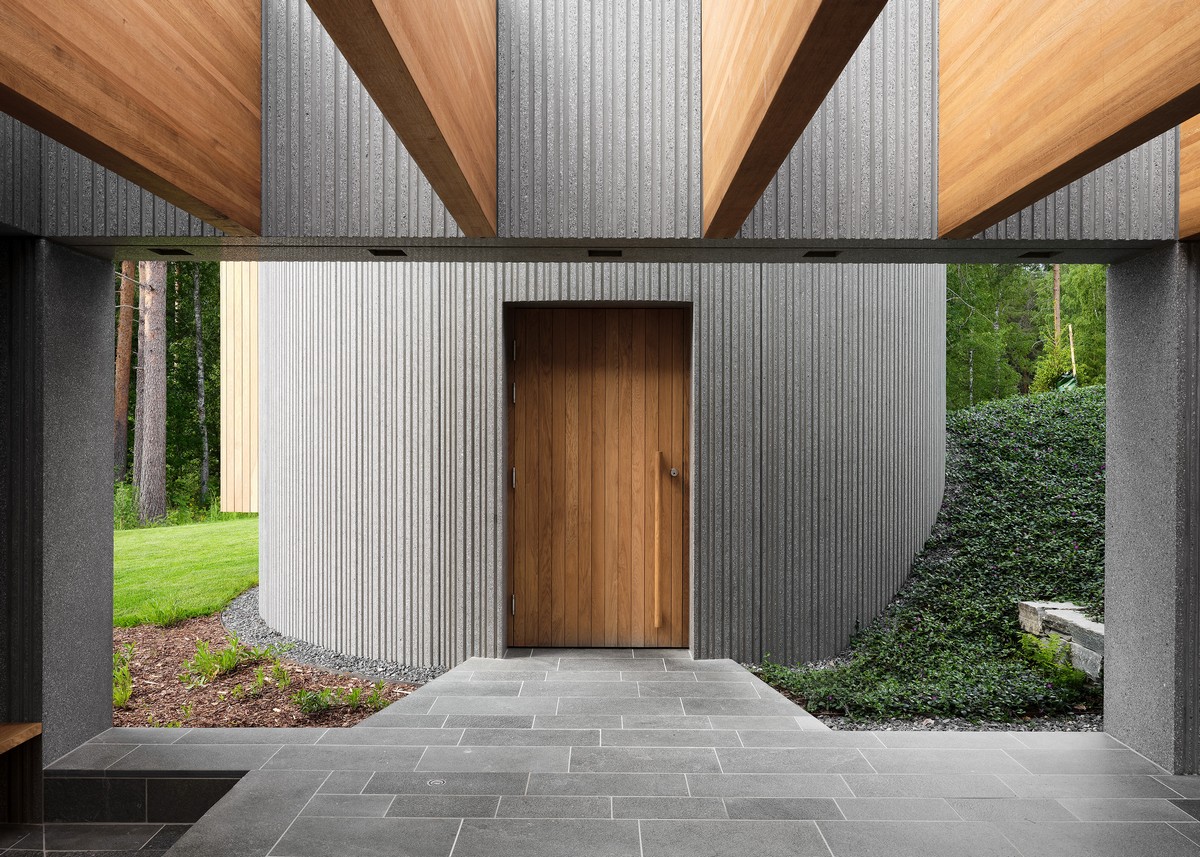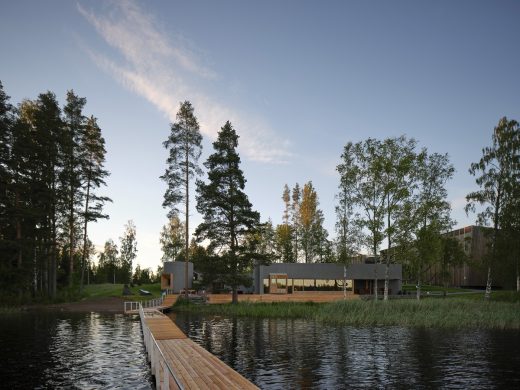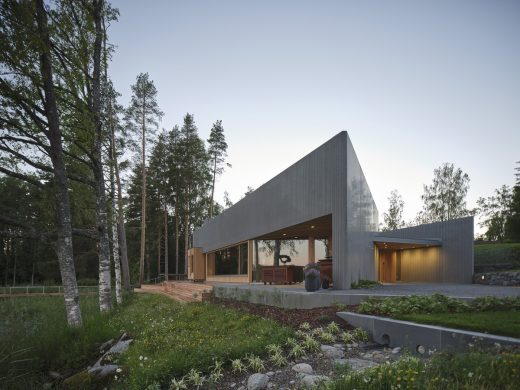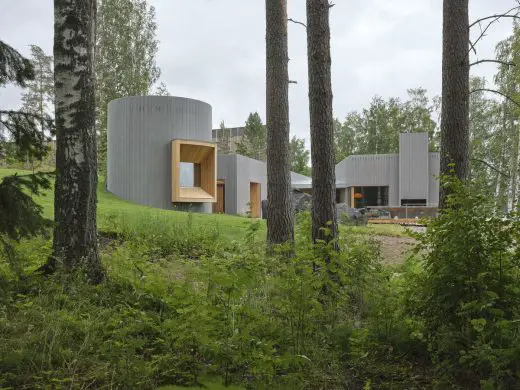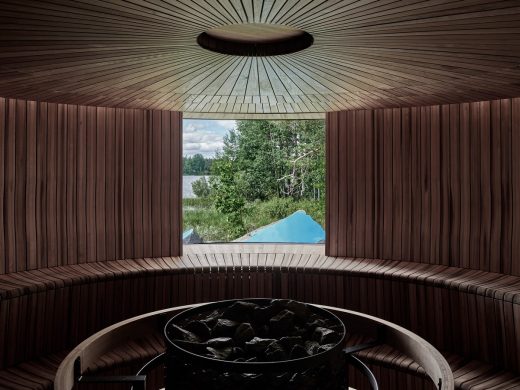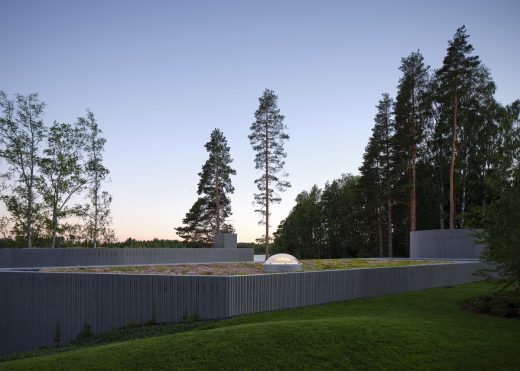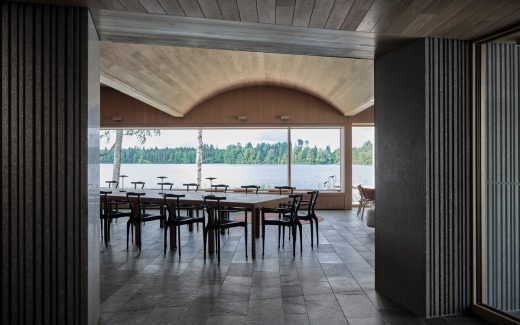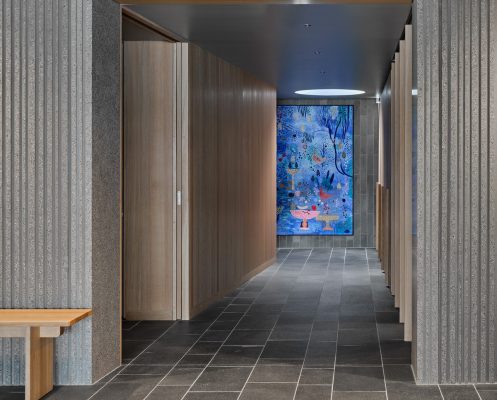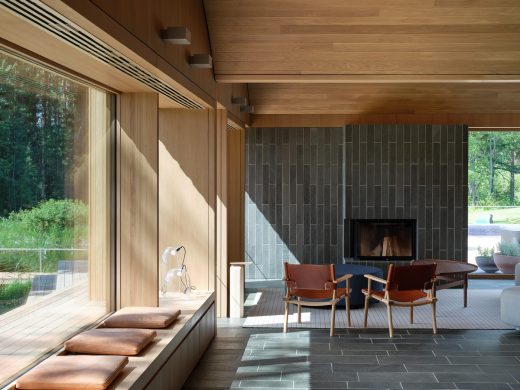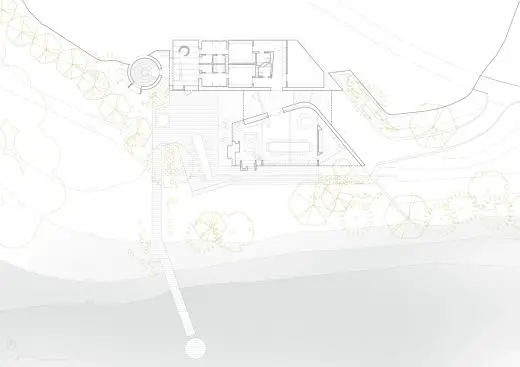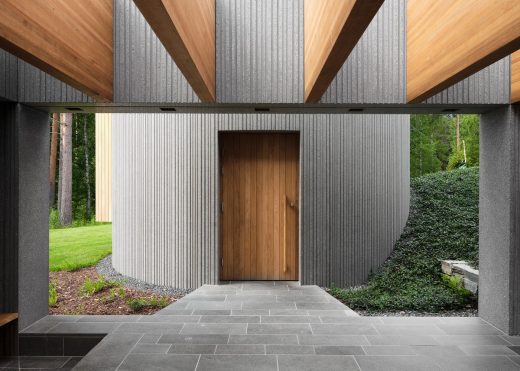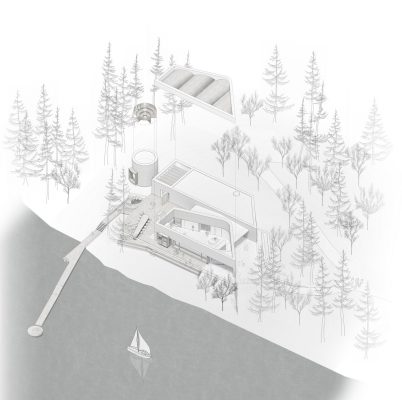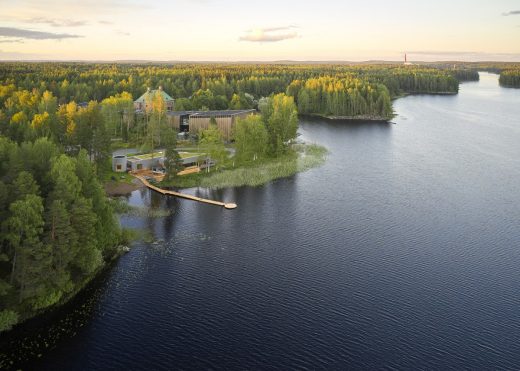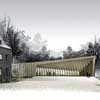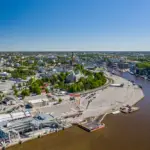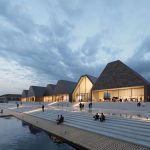Art Sauna Gösta Serlachius Museum, Finnish Design Contest, Contemporary Building Finland
Art Sauna Gösta Serlachius Museum Of Contemporary Art In Finland
Finnish Contemporary Art Museum, Mänttä building design by Mendoza Partida and BAX Studio
15 November 2022
Art Sauna, An Experience That Combines Art, Nature And Architecture, Is The New Space At The Gösta Serlachius Museum Of Contemporary Art In Finland
Design: Mendoza Partida + BAX Studio
Photos © Marc Goodwin
Art Sauna at Gösta Serlachius Museum Of Contemporary Art In Finland
Art Sauna is a continuation of the emotional journey that the Gösta Serlachius Museum offers visitors. The new construction, subtle, intimate and domestic in scale, joins the site and blends in with the scenario of dialogue between art, nature and architecture that it proposes.
Architecture practices Mendoza Partida (Héctor Mendoza, Mara Partida) and BAX Studio (Boris Bezan), winners in 2011 of the international competition organized by the Serlachius Foundation to extend its museum with the construction of the Gösta pavilion, have brought the logic and common sense they applied then to the new space. To this end, one of the main architectural principles in the design of Art Sauna involved integrating the building into the journey, merging it with the terrain and making it part of the landscape.
The sauna is an inseparable part of Finnish tradition, so much so that it was the first aspect of this Nordic country’s culture to be added to the UNESCO’s List of Intangible Cultural Heritage. The Art Sauna project, integrating this culture into an experience of art, nature and architecture, was one of the three nominations for the 2022 Finlandia Prize for Architecture, awarded for the past nine years by the Finnish Association of Architects (SAFA).
Since its extension in 2014, the experience offered to visitors by the Gösta Serlachius Museum of Contemporary Art in Mänttä, Finland, goes much further than the act of viewing art in an ad hoc space. It is a journey linking moments that bring together landscape, art and architecture. In this sense, Art Sauna, the new space designed by Mendoza Partida and BAX studio, both international practices based in Barcelona, receives the visitor and offers continuity of that experience, now on an even more subtle, domestic and intimate scale.
The Art Sauna experience starts with its approach. In the south sector of the park that surrounds the Museum, at a point where the path nears the level of the water, a very discreet forking paths is created, gently leading visitors to a semi-secret place where they come across a low-key welcoming porch that prepares them for what lies beyond. The entire route, inside and outdoors, is defined by the constant presence of the Finnish landscape, framing splendid views with an architecture that acts as a refuge and a background for the artworks specially produced for this project.
The architects Héctor Mendoza, Mara Partida and Boris Bezan designed the new space by applying the logic and common sense which, in 2011, after winning an international competition, they used to design the existing Gösta pavilion. This is why one of the main strategies was to merge Art Sauna with the topography, thereby making it part of the landscape. The pavilion was built by understanding and enhancing the lightweight wooden construction, related to the forest but set on a solid plinth of artificial stone.
Now, the new sauna space belongs to the ground, and this fact opens up a world of possibilities to challenge traditional construction with a natural appearance. Being in contact with the land, the use of natural stone and artificial stone textured using creative formwork and tinted striated concrete comes into its own, always seeking a fine, smooth perception similar to a domestic environment. Furthermore, in the Art Sauna construction, the retention walls shape the interior spaces, generating “patios” as mediators where the light, the views and the art surprisingly embrace visitors.
The project opts for breaking with the traditional idea of relating two of the main indoor spaces: the changing area and the sauna room. The solution was to lead the visitor through a singular, surprising space, an outdoor lobby, a patio like the atrium of the domus of the Roman temple, before entering the cylindrical construction that houses the room or temple that is the sauna. This geometry offers an intimate atmosphere, of community, of belonging. For the interior, meanwhile, it was decided to work with delicate details, like the wood profiles that simultaneously define seats and claddings, framing views that open up towards the art and nature, with the lake and the horizon as the background of the image.
Outside, there is a large terrace that is contained on three of its sides, either by construction or by the nature that surrounds it, opening up completely towards the lake. Here, the centre of attention is the Candela Table. This piece was specially designed in memory of Spanish architect Félix Candela, who elegantly combined geometry and statics in spatial structures centrally supported on a single point. The Candela Table is crafted of the same material that covers the building’s façades. Prefabricated concrete that abstractly, in its surface treatment, enhances the simplicity of its architectural geometry.
Then, inside, comes a lounge area that promotes a domestic atmosphere on the scale of a cosy home. This space allows for versatility, with the possibility of creating different spatial layouts, from groups of smaller tables to one long table that seats 30 people. Its unique roof, with a system of four timber vaults, is designed to give continuity and spaciousness to the spaces that it embraces or fluidly links. This fluidity contrasts with a great eight-metre-long window that frames the landscape horizontally and draws it unexpectedly into the indoor atmosphere.
The dining area is supported by a kitchen area, a wine-tasting area around a specially designed circular table with mobile modules that make for versatility in both use and layout, and a living room next to the fireplace. In its position next to the terrace, this fireplace provides a twofold service, opening up to the outdoor activities that it encourages.
About Mendoza Partida
Mendoza Partida is an international architecture practice based in Barcelona, the product of the symbiosis and connection between Héctor Mendoza and Mara Partida, two professionals whose singular sensibility for questioning and interpreting a wide variety of contexts and situations, together with a constant search for new ways of doing, endorses their projects.
A practice whose activity centres principally on the design of cultural amenities and housing, areas where its solutions, as well as being a perfect fit, bring a particular level of wellbeing.
Mendoza Partida use experimentation, investigation and innovative solutions based on common sense and consistency to give their architecture a precise balance of geometry, material and emotion.
About BAX studio
BAX studio is an international Barcelona-based practice directed by Boris Bežan and Mónica Juvera. Together with their team and a network of collaborators in different countries, they develop works whose quality and originality have been recognised by renowned international awards.
BAX studio brings a reflective nature to architecture and centres its design process on finding, for each project, an idea that serves as a catalyst for solutions that are at once unique and effective.
This approach gives their architecture its coherence and originality, while their proven technical reliability enables them to work at a wide variety of scales. Spatial richness, dialogue with pre-existing features and feedback between architecture and public space are the inherent common criteria of their work.
About the Gösta Serlachius Museum of Contemporary Art
June 2014 saw the opening of the extension of the Gösta Serlachius Museum of Contemporary Art in Mänttä, Finland, the work of architects Mara Partida, Boris Bezan and Hector Mendoza, winners in 2011 of the international open competition organized by the Serlachius Foundation with the support of the Finnish Association of Architects, SAFA.
The Serlachius Foundation was set up in 1933 to care for and maintain the art collection created by Gösta Serlachius (1876-1942), owner of one of Finland’s biggest paper industries. Today, the museum exhibits valuable works spanning the various periods of the Finnish art scene, from its earliest proposals to the prolific Golden Age, modernism and more contemporary work. It also presented the exhibition SuperPop!, curated by Timo Valjakka and bringing together classic works of American and Finnish pop art.
Photography © Marc Goodwin
Art Sauna, Gösta Serlachius Museum, Finland building design images / information received 151122
Previously on e-architect:
16 Jan 2012
Gösta Serlachius Museum
Design: Matteo Cainer Architects Ltd
Taittogami_ Gösta Serlachius Museum, Finland
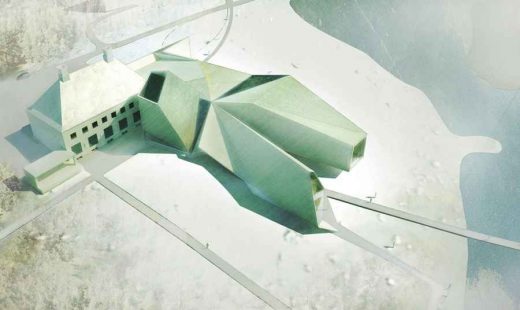
images : Matteo Cainer Architects Ltd
Gösta Contemporary Art Museum
architectural studio MX SI
The architectural studio MX_SI based in Barcelona, is the winner of the competition for the extension of the Gösta contemporary Art Museum in Finland
Gösta Contemporary Art Museum images / information from MX_SI
Location: Mänttä, Finland, north east Europe
New Finnish Architecture
Contemporary Architecture in Finland
Finnish Design Shop – Nordic design store, Turku
Design: avanto architects ltd
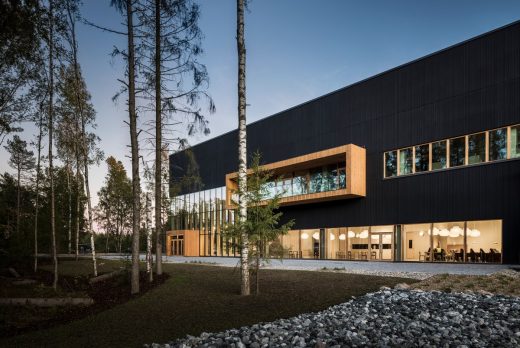
photo : kuvio.com / Anders Portman
Finnish Design Shop, Turku
New Nordic Schools, Jätkäsaari, Helsinki
Design: Avanto Architects Ltd
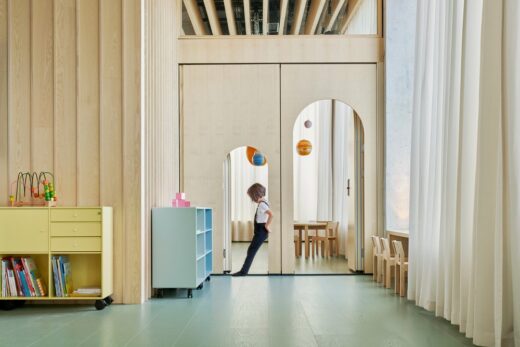
photograph : Riikka Kantinkoski
New Nordic School by the Sea, Helsinki
Arctic TreeHouse Hotel Restaurant, Rovaniemi
Design: Studio Puisto Architects
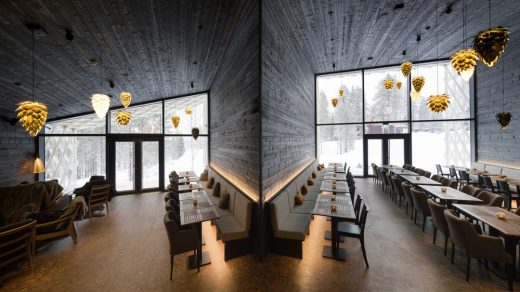
photo : Marc Goodwin
Arctic TreeHouse Hotel Restaurant Rovaniemi
Finnish Architecture – Selection of reflective architectural spaces on e-architect:
Kamppi chapel of silence, Helsinki
K2S Architects
Kamppi Chapel
Kuokkala Church, Jyväskylä
Lassila Hirvilammi Architects
Kuokkala Church
Comments / photos for the Art Sauna Gösta Serlachius Museum, Finland – Mänttä Building design by Mendoza Partida and BAX Studio page welcome

